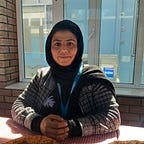Polio Convergence Communication
Typically we all know that communication changes the social and behavior norms. For many years we communicate to change single behavior with different communication channels in different programs and setups, yet we forget about convergence that can change many social and cultural norms from the different aspects with single communication approach, which is absolutely right, especially when we are working for emergency programs such as polio eradication , measles outbreaks and etc, where we are obliged to carry out too many things in shorter time with a tangible results, in such situations departments and programs normally operates parallelly, though they might be sitting in same building or sharing office space yet will operate parallelly , the reasons why this happens is thus because every program departments works proactively to be productive to serve better and to achieve the sited goals in a timely manner. But what about using streamlining methods to convergent the communication approaches within single means for different social norms, it seems to be difficult at the beginning but for sure not a big deal while it will bring huger and sustainable change, the changes may not be rapid or dramatic yet solid and ecological.
I have learned the lesson working on convergence communication for polio eradication program in Afghanistan, Where we slightly change the context of our field force (Social mobilizers /communication immunization network) to communicate about malnutrition, ANC and birth registration instead of polio focused key messages, meanwhile we prepared a referral sheets for SM to refer the classified child to the health facility and referral pockets in related health facilities for record keeping of referral child.
In first eight month of piloting the approach data collected shows RI service delivery for 85% of referred children in eastern region (91554 out of 107642), 82% of 7954 referred child got birth registration which is significant.
more importantly gained the commitment and satisfaction of social workers to perform the services as their daily work inline with polio communication and social mobilization.
“Before using the referral system, we are not actually able to track children and pregnant women that were referred by SM to the health facility, now it is easy because we have linked it with health facilities and health facilities keeps the records of our referrals”
Stated Farkhunda Noori the CCS Angorbagh district of Jalalabad during her interview, she added that from her experience there are some families that don’t know if their child is malnourished , therefore it is important to help them know and refer their child to health facility where they can get services
“it makes work easy for me , and give me value at community because I provide them different information and support them to get available services, finally people do not look at me as only polio worker but as someone who can support them in different health issues” Said Huma one of the Social mobilizers in Narang bagh of Jalalabad
It is impossible to get such useful data and tangible results without support /efforts of polio field forces (Immunization communication network/Information Communication Network) and community participation, we know that it is the first steps and there is long way to go, yet very encouraging and positive steps toward community development and better service delivery to the community members
Thanks for reading and time! Drop me a comment below
